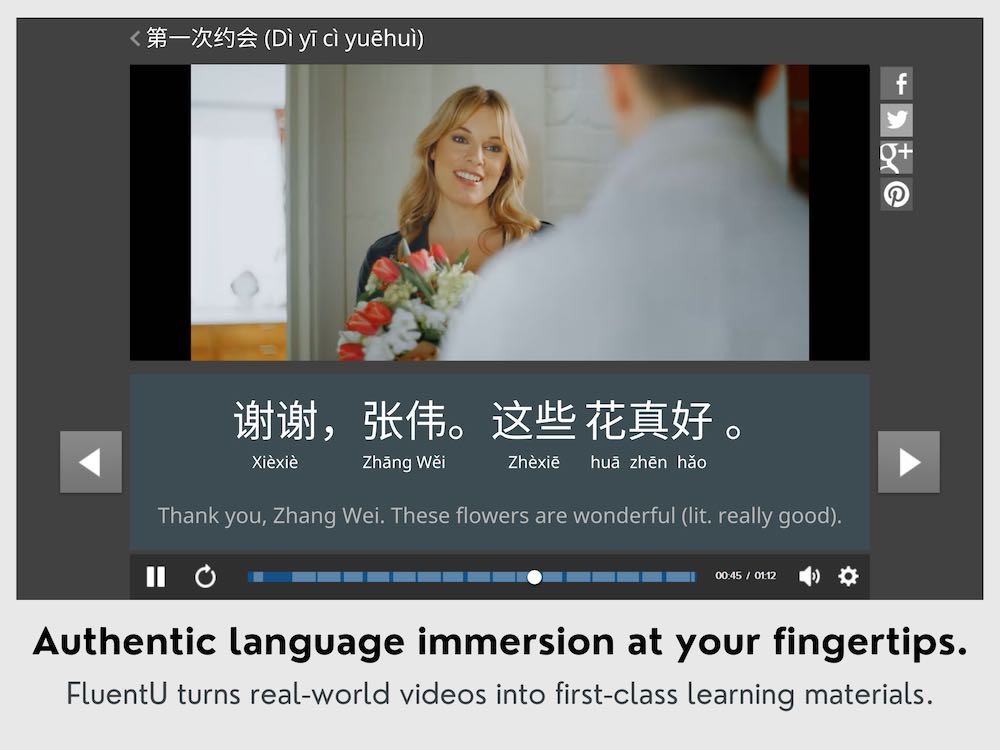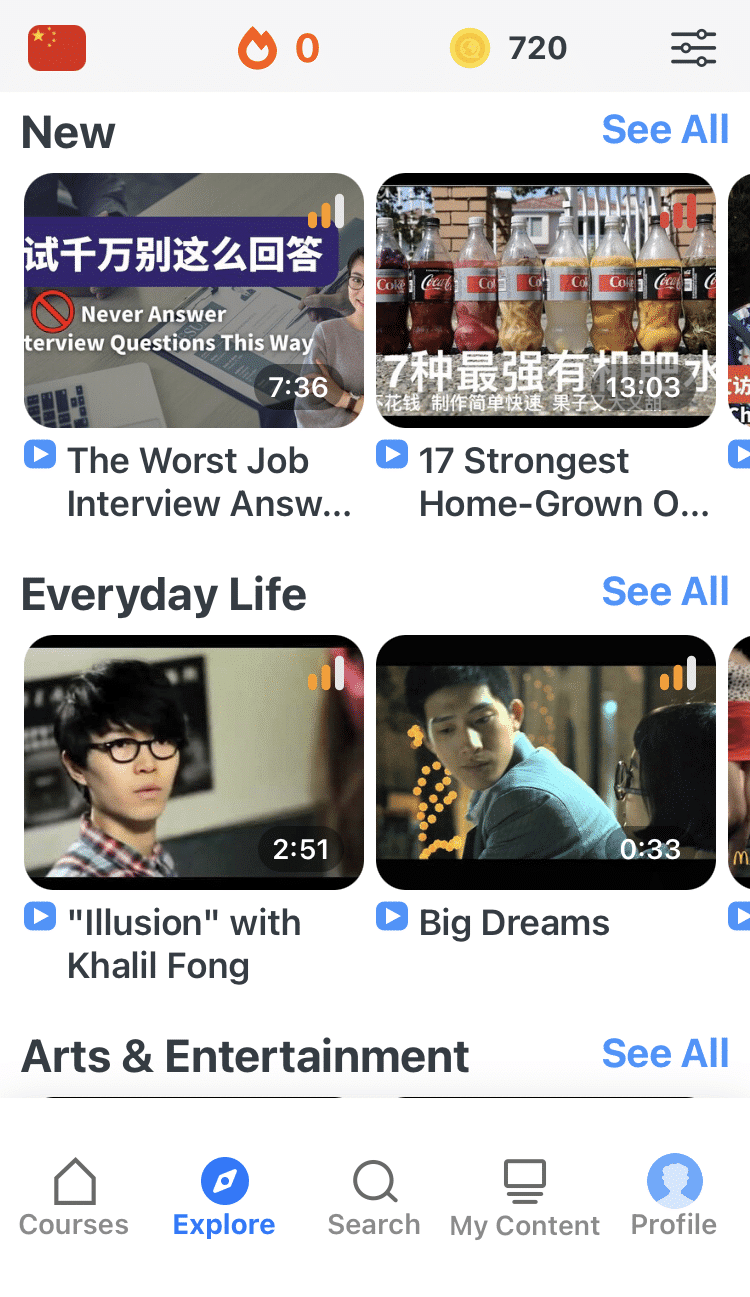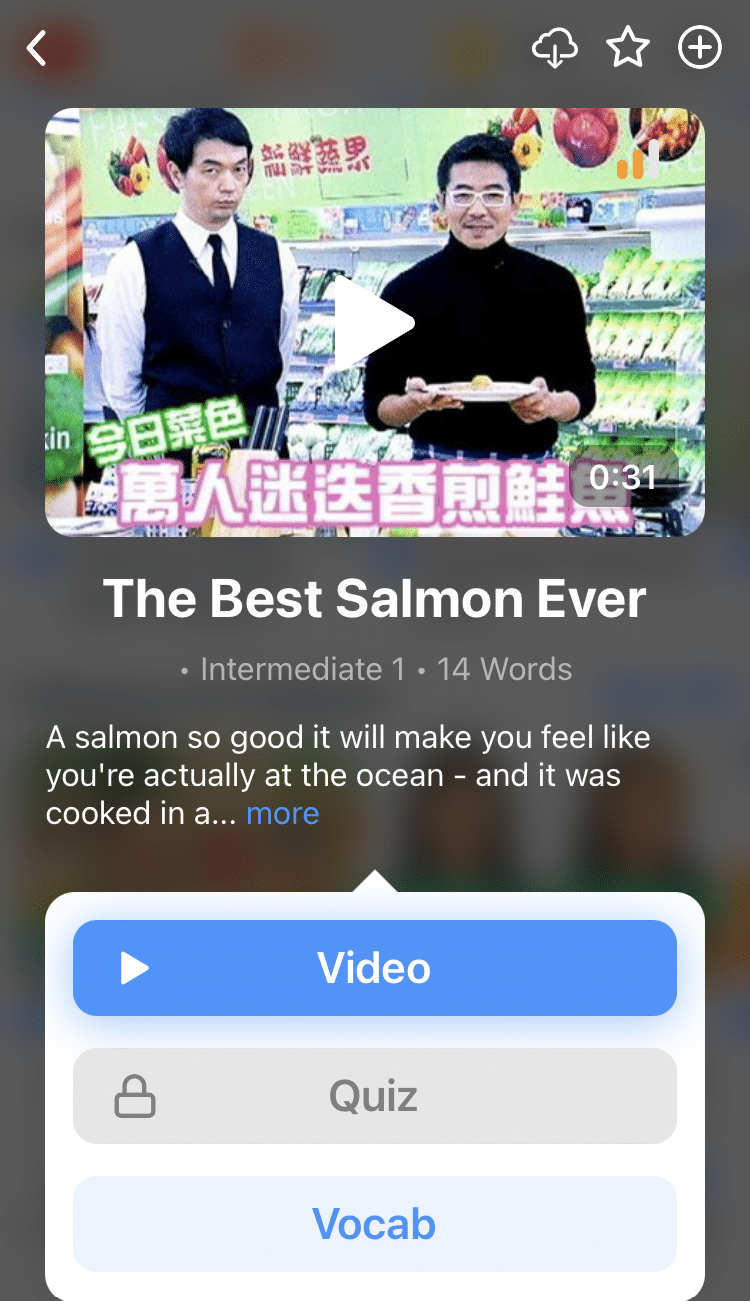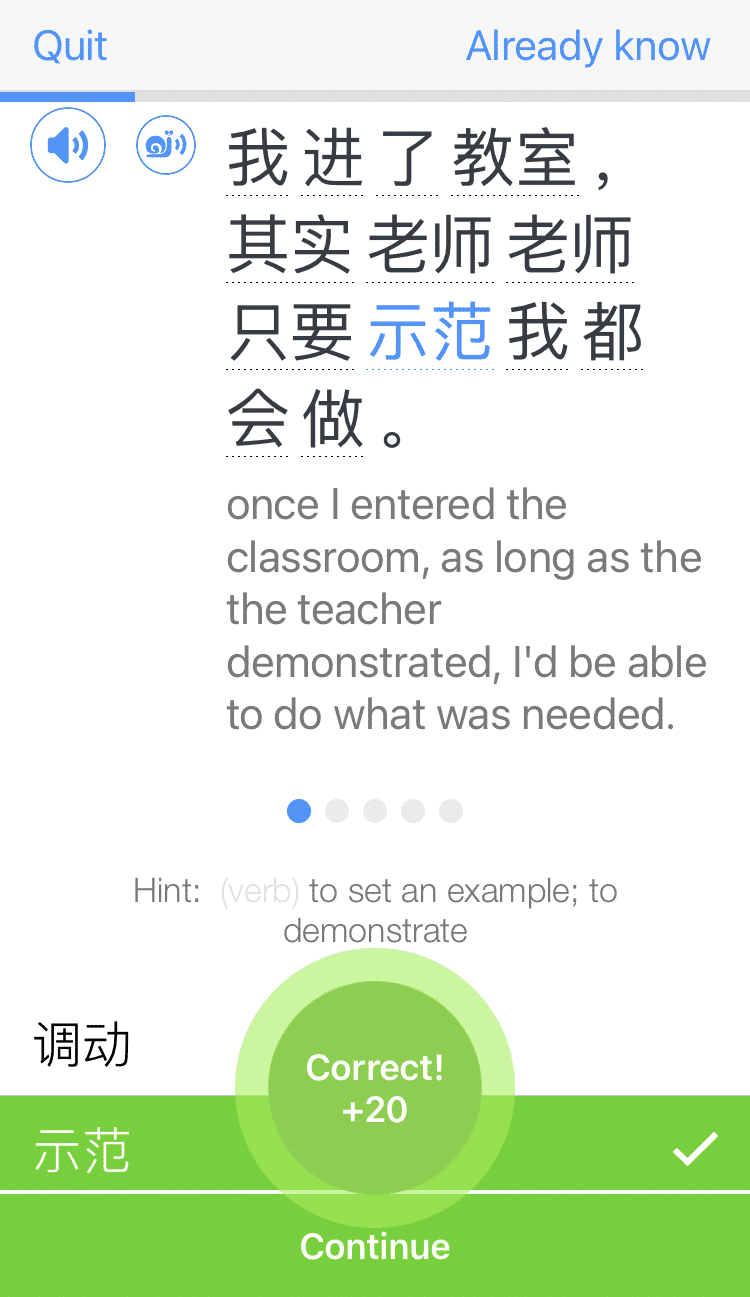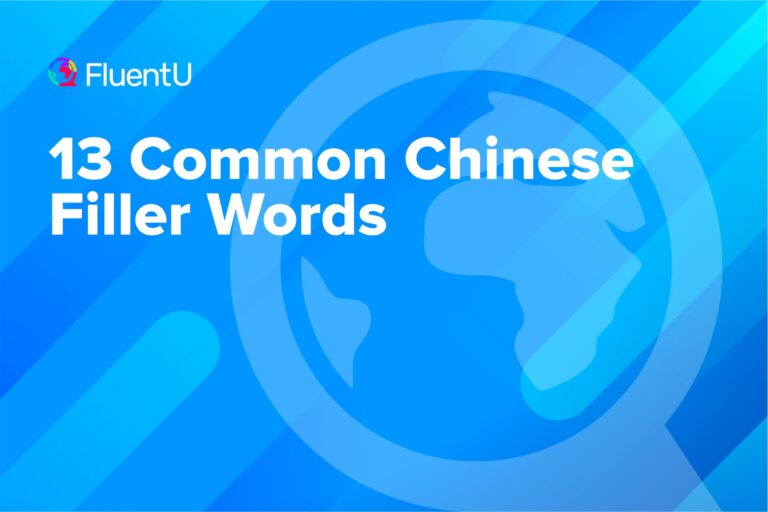Contents
- Use 和 (hé) to Connect Nouns
- Use 跟 (gēn) to Connect People Performing the Same Action
- Use 也 (yě) to Connect Similar Verbal Phrases
- Use 又 (yòu) to Connect Similar Adjectives or Adverbs
- Use 还 (hái) to Connect Different Actions
- Other Ways to Say “And” in Chinese
- Dropping the “And” in Chinese
- Quiz on Using “And” in Chinese
- How to Practice Using “And” in Chinese
- And One More Thing...
11 Ways to Say “And” in Chinese [With Audio and Quiz]
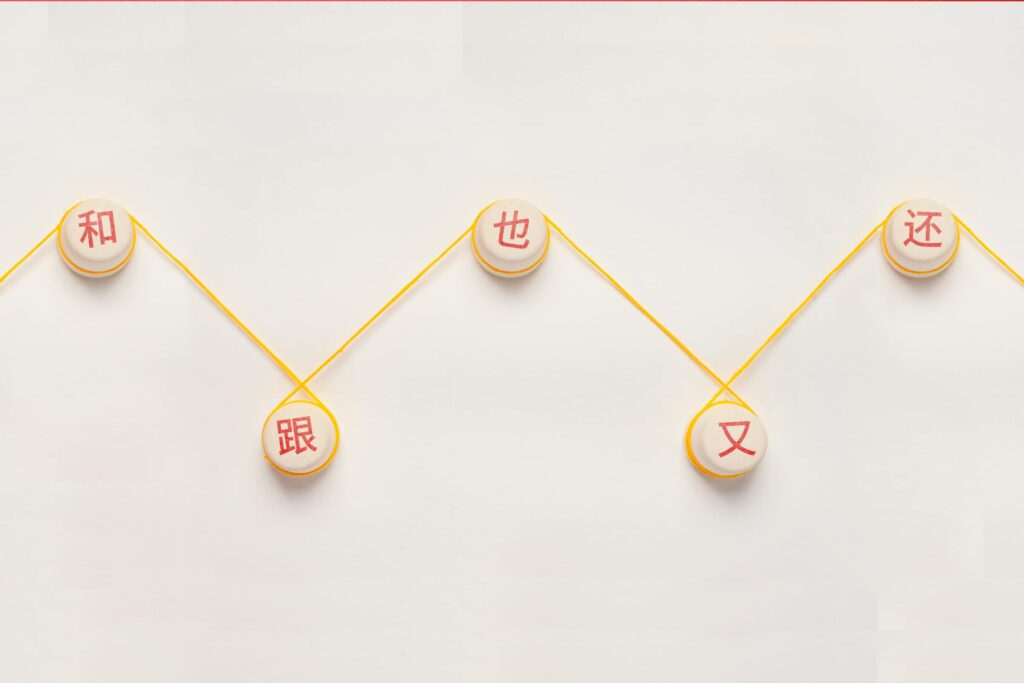
One of the easiest ways to make your language skills sound more advanced is by connecting your thoughts using conjunctions like “and.”
This is true in English and Chinese. Because Chinese is a contextual language, there’s an “and” for every circumstance.
In this article, I’ll show you all the different ways you can say “and” in Chinese so you can vary your speech and sound more like a native speaker.
Download: This blog post is available as a convenient and portable PDF that you can take anywhere. Click here to get a copy. (Download)
Use 和 (hé) to Connect Nouns
When you simply need to connect two nouns, go with 和. You can use 和 to connect two subjects or two objects.
Here’s an example of 和 connecting two subjects:
我和他只是朋友。
(wǒ hé tā zhǐ shì péng yǒu.)
He and I are just friends.
And here’s an example of 和 connecting two objects:
她喜欢四川和湖南菜。
(tā xǐ huan sì chuān hé hú nán cài.)
She likes Sichuan and Hunan cuisines.
Use 跟 (gēn) to Connect People Performing the Same Action
When two people are doing something together, you can either stick 和 between the two people in the sentence, or you can swap that with 跟, which means “with.”
Here’s an example. Let’s say you want to share that you watched a movie with your boyfriend yesterday. There are two ways to express the same thought:
昨天我和男朋友看电影。
(zuó tiān wǒ hé nán péng yǒu kàn diàn yǐng.)
My boyfriend and I watched a movie yesterday.
昨天我跟男朋友(一起)看电影。
(zuó tiān wǒ gēn nán péng yǒu [yì qǐ] kàn diàn yǐng.)
I watched a movie with my boyfriend yesterday.
Both options are correct, though using 跟 takes your Chinese fluency up a notch.
Note: 一起 means “together.” Referring to the example above, it’s implied that you and your boyfriend watched a movie together. But in Mandarin, the sentence formula for 跟 is as follows:
Subject + 跟 + Person + (一起)
As you can see, 一起 is completely optional but highly encouraged.
Use 也 (yě) to Connect Similar Verbal Phrases
When two subjects share the same action or verbal phrase, 也 meaning “(and) also” is the appropriate conjunction to use in Chinese.
她去过英国,我也去过英国。
(tā qù guò yīng guó, wǒ yě qù guò yīng guó.)
She’s been to England, and I’ve also been to England.
我的朋友想学中文,我也想学中文。
(wǒ de péng yǒu xiǎng xué zhōng wén, wǒ yě xiǎng xué zhōng wén.)
My friend wants to learn Chinese, and I also want to learn Chinese.
Additionally, you can use 也 to connect two similar verbal phrases or actions by a single subject. Here are some examples:
我去过英格兰,也去过苏格兰。
(wǒ qù guò yīng gé lán, yě qù guò sū gé lán.)
I’ve been to England, and I’ve also been to Scotland.
她不喜欢抱子甘蓝,也不喜欢西兰花。
(tā bù xǐ huan bào zi gān lán, yě bù xǐ huan xī lán huā.)
She doesn’t like Brussels sprouts, and she also doesn’t like broccoli.
Note: When used to connect verbal phrases, 也 is preceded by a comma.
Use 又 (yòu) to Connect Similar Adjectives or Adverbs
If you’re looking to use multiple adjectives to describe a noun, the “and” to use in this situation would be 又. Please note that both adjectives have to be positive or negative.
Instead of simply placing 又 in between two adjectives, the correct format in Chinese is:
又 + adjective 1 + 又 + adjective 2
You can think of the double 又 as “both…and…” in English. Here are a couple of examples:
姐姐的头发又长又卷。
(jiě jie de tóu fà yòu zhǎng yòu juǎn.)
(My) older sister’s hair is both long and curly.
那块蛋糕又浓奶油又多。
(nà kuài dàn gāo yòu nóng nǎi yóu yòu duō.)
That cake is both rich and creamy.
Another option is to swap out the first 又 with 既 (jì). 既…又… also means “both…and…” The only difference between these phrases is that 既…又… can be used to connect adjectives and adverbs, whereas the double 又 only connects adjectives.
既 + adjective/adverb 1 + 又 + adjective/adverb 2
Here’s how the 既…又… can be used with adjectives and adverbs.
演讲既混乱又无聊。
(yǎn jiǎng jì hùn luàn yòu wú liáo.)
The lecture was both disorganized and boring.
他工作既迅速又安静。
(tā gōng zuò jì xùn sù yòu ān jìng.)
He works both quickly and quietly.
Use 还 (hái) to Connect Different Actions
What if you want to connect two different actions from a single subject?
Simple: Just use 还, meaning “and also,” as the conjunction.
我丈夫洗衣服,还做晚饭。
(wǒ zhàng fu xǐ yī fu, hái zuò wǎn fàn.)
My husband does the laundry and also makes dinner.
他们喝了酒,还吃了奶酪。
(tā men hē le jiǔ, hái chī le nǎi lào.)
They drank wine and also had cheese.
Other Ways to Say “And” in Chinese
Thinking of using a synonym of “and” instead? Here are other Chinese conjunctions you can use in place of “and.”
以及 (yǐ jí) — as well as
您要牛奶以及糖吗?
(nín yào niú nǎi yǐ jí táng ma?)
Do you want milk as well as sugar?
还有 (hái yǒu) — and also
有洋葱,胡萝卜,还有芹菜。
(yǒu yáng cōng, hú luó bo, hái yǒu qín cài.)
There are onions, carrots and (also) celery.
之后 (zhī hòu) — and then
她的儿子做了作业,之后玩电子游戏。
(tā de ér zi zuò le zuò yè, zhī hòu wán diàn zǐ yóu xì.)
Her son did his homework and then played video games.
然后 (rán hòu) — then
他们想去西班牙,然后去意大利。
(tā men xiǎng qù xī bān yá, rán hòu qù yì dà lì.)
They want to go to Spain, then Italy.
不但…而且 (bú dàn…ér qiě) — not only… but also
她不但会唱歌,而且会跳舞。
(tā bú dàn huì chàng gē, ér qiě hái tiào wǔ.)
Not only can she sing, but she can also dance.
For some further explanation on how to use these different ways to say “and” in Chinese, check out this video from the Grace Mandarin Chinese YouTube channel:
Dropping the “And” in Chinese
When it comes to speech, native and fluent speakers tend to drop words that can be inferred from conversation or context. One such word is “and.”
In spoken Chinese, you can drop the “and” to connect nouns.
爸爸妈妈到了吗?
(bà ba mā ma dào le ma?)
Have Mom and Dad arrived yet?
You can do the same when tying two actions to one subject.
她跑步游泳。
(tā pǎo bù yóu yǒng.)
She runs and swims.
You can also drop the “and” to connect adverbs.
他说话大声清晰。
(tā shuō huà dà shēng qīng xī.)
He speaks loudly and clearly.
And lastly, you can drop the “and” to connect adjectives.
您的说明必须清晰明确。
(nín de shuō míng bì xū qīng xī míng què.)
Your instructions need to be clear and specific.
Now, why would I make you go through an entire list of translations for “and” in Chinese when there’s an option to not include it at all?
Dropping the “and” can be risky, considering there are a lot of homonyms in Chinese. Two verbs, adjectives or adverbs put together without that clear division could sound like you’re saying a different word than you’d intended.
When dropping the “and,” it helps to pause in place of the conjunction to separate the ideas. You can also use a comma if you’re writing informally in chat, text, email, etc.
There’s absolutely nothing wrong with keeping the conjunction in spoken and written Mandarin. For clarity’s sake, keep the conjunction in there, and let’s leave this option to the pros.
Quiz on Using “And” in Chinese
Now that we’ve gone over some different ways to connect words and phrases within a Chinese sentence, it’s time to test what you’ve learned!
Take the quiz below (without peaking at the answers above!) and just refresh the page if you want to start over.
When you need to connect two nouns (two subjects or two objects), which Chinese character should you use?
When you want to connect two similar verbal phrases or actions by a single subject, which Chinese character should you use?
When you want to use multiple adjectives (both being positive or negative) to describe a noun, which Chinese character should you use?
How to Practice Using “And” in Chinese
I know that was a lot to take in, considering we only actually covered one conjunction! But having this insight into the various ways you can say “and” in Chinese immensely improves your speaking and writing skills.
To practice what you’ve learned, you can create a deck of flashcards with the various ways to say “and” using a Chinese flashcard app or notecards.
I also recommend studying conjunctions and other vocab and grammar by consuming authentic Chinese content like movies and TV shows. For Chinese content with learner support, you can try a program like FluentU.
FluentU takes authentic videos—like music videos, movie trailers, news and inspiring talks—and turns them into personalized language learning lessons.
You can try FluentU for free for 2 weeks. Check out the website or download the iOS app or Android app.
P.S. Click here to take advantage of our current sale! (Expires at the end of this month.)
With some review and practice, you’ll soon be connecting verbs, nouns and more with confidence and ease!
And One More Thing...
If you want to continue learning Chinese with interactive and authentic Chinese content, then you'll love FluentU.
FluentU naturally eases you into learning Chinese language. Native Chinese content comes within reach, and you'll learn Chinese as it's spoken in real life.
FluentU has a wide range of contemporary videos—like dramas, TV shows, commercials and music videos.
FluentU brings these native Chinese videos within reach via interactive captions. You can tap on any word to instantly look it up. All words have carefully written definitions and examples that will help you understand how a word is used. Tap to add words you'd like to review to a vocab list.
FluentU's Learn Mode turns every video into a language learning lesson. You can always swipe left or right to see more examples for the word you're learning.
The best part is that FluentU always keeps track of your vocabulary. It customizes quizzes to focus on areas that need attention and reminds you when it’s time to review what you’ve learned. You have a 100% personalized experience.
Start using the FluentU website on your computer or tablet or, better yet, download the FluentU app from the iTunes or Google Play store. Click here to take advantage of our current sale! (Expires at the end of this month.)
